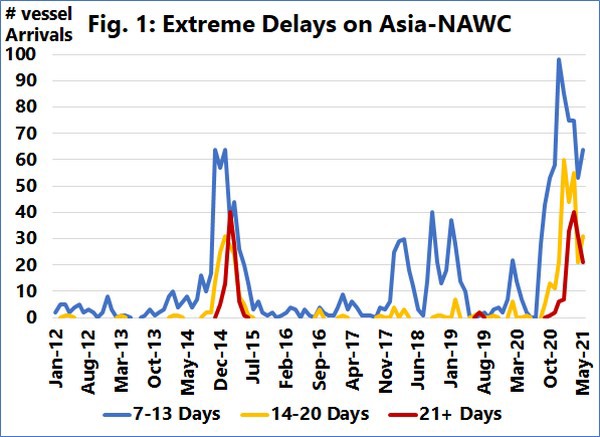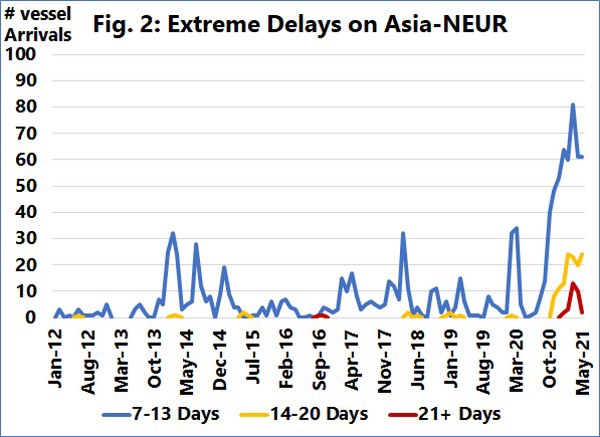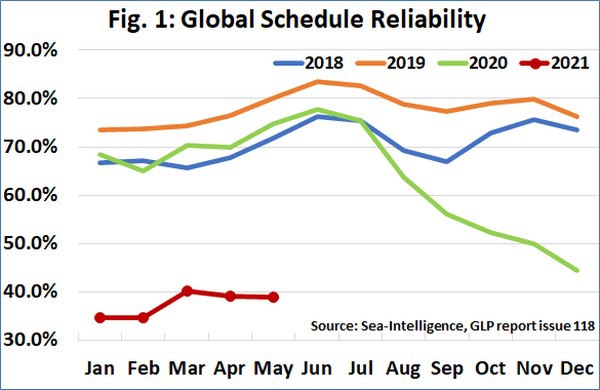Globally, schedule reliability has been pretty poor in all of 2021 as several ports and regions have been severely impacted by port congestion. In issue 520 of the Sunday Spotlight, we looked at the number of vessel arrivals subject to extreme delays i.e. delays of over 7 calendar days.

As can be seen in figure 1, on Asia to North America West Coast, at its peak, vessel arrivals that were 7‑13 and 14‑20 days late was higher than at the height of the 2015 US West Coast labour dispute. In January-May 2021, a staggering 695 vessel arrivals were over a week late, of which 343 vessel arrivals were more than 14 days late, with 132 of the vessel arrivals being more than 21 days late. For comparison, from January 2012 to December 2020, 1,535 vessel arrivals were more than a week late, 330 were more than 2 weeks late, and a combined 104 vessel arrivals were over 21 days late.

On Asia-North Europe, 461 vessel arrivals were more than 7 days late in January-May 2021, of which 134 were more than 14 days late, and 30 were more than 21 days late. This is compared to 792 vessel arrivals being more than 7 days late in the 9-year period from January 2012 to December 2020. In the same period, 35 vessel arrivals were more than 14 days late, and just two vessel arrivals were more than 21 days late.
Port congestion is far from over, that much is clear by our analysis. In just May 2021, 174 vessels that berthed in North American ports on the Transpacific trade were over 7 days late. On Asia-Europe, the number was 114.
Schedule reliability continued to be low in May 2021
Sea-Intelligence has published issue 118 of the Global Liner Performance (GLP) report, with schedule reliability figures up to and including May 2021. As the report itself is quite comprehensive and covers schedule reliability across 34 different trades lanes and 60+ carriers, this press release will only cover the global highlights from the full report.

Schedule reliability has been largely consistent these past few months, albeit at a much lower level than the industry stakeholders would have preferred. In May 2021, schedule reliability declined by -0.2 percentage points M/M to 38.8%. On a Y/Y level, schedule reliability was down a massive -36.0 percentage points. The average delay for LATE vessel arrivals on the other hand had been improving since March 2021. In May 2021 however, the average delay increased slightly by 0.05 days to 5.86 days. The level of delays in 2021 have been the highest across each month when compared to the previous years.
 For more information:
For more information:
Sea-Intelligence ApS
Vermlandsgade 51
2300 Copenhagen S
Denmark
Email: ia@sea-intelligence.com
Email: am@sea‑intelligence.com
